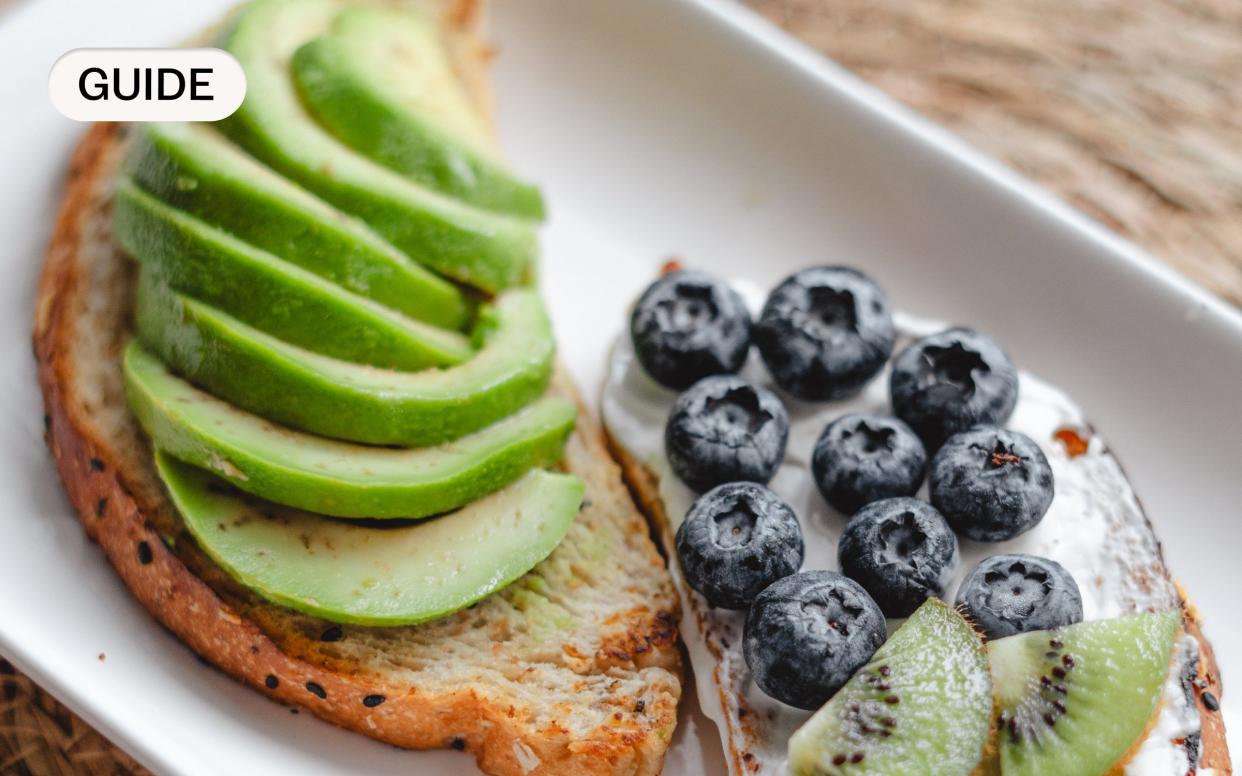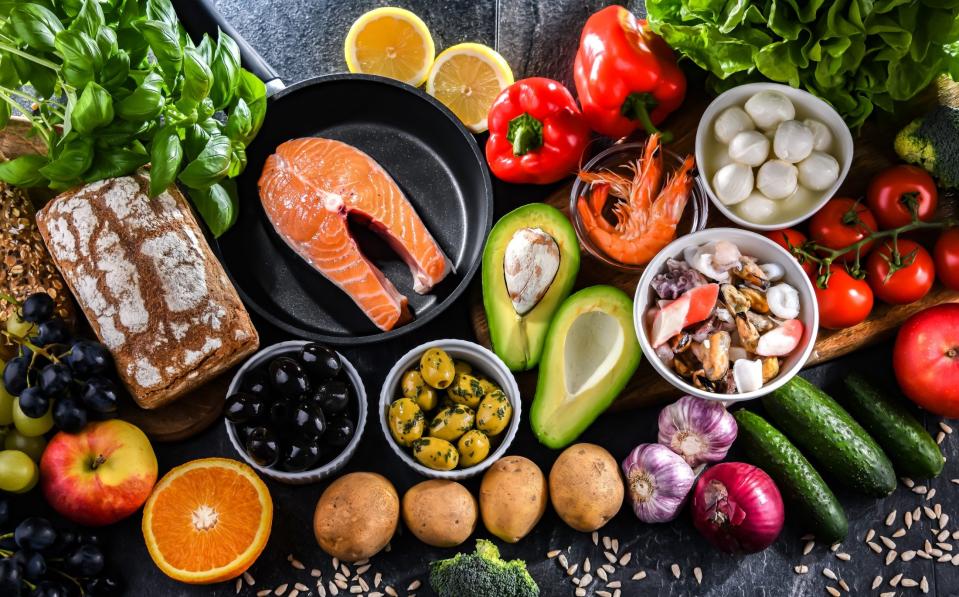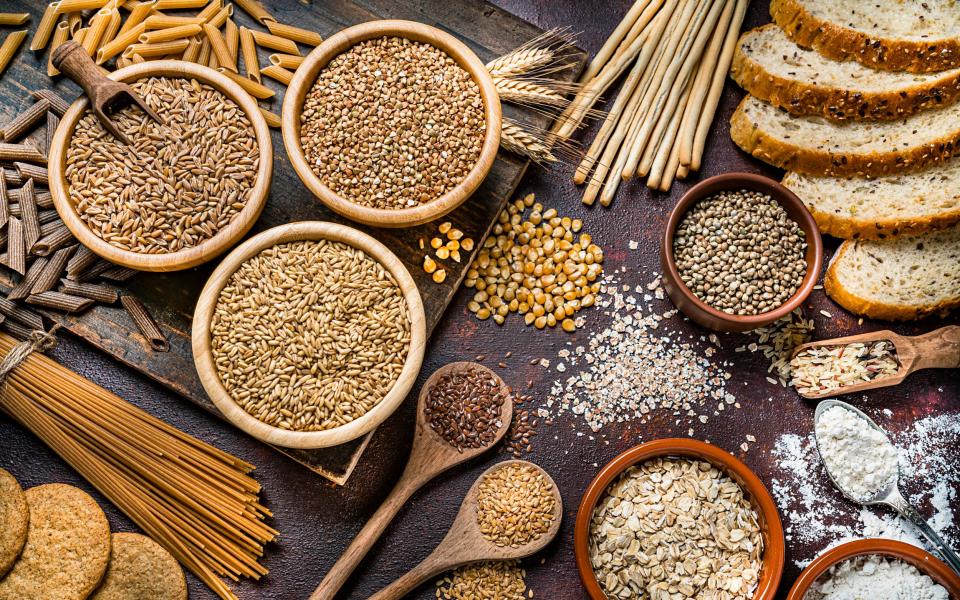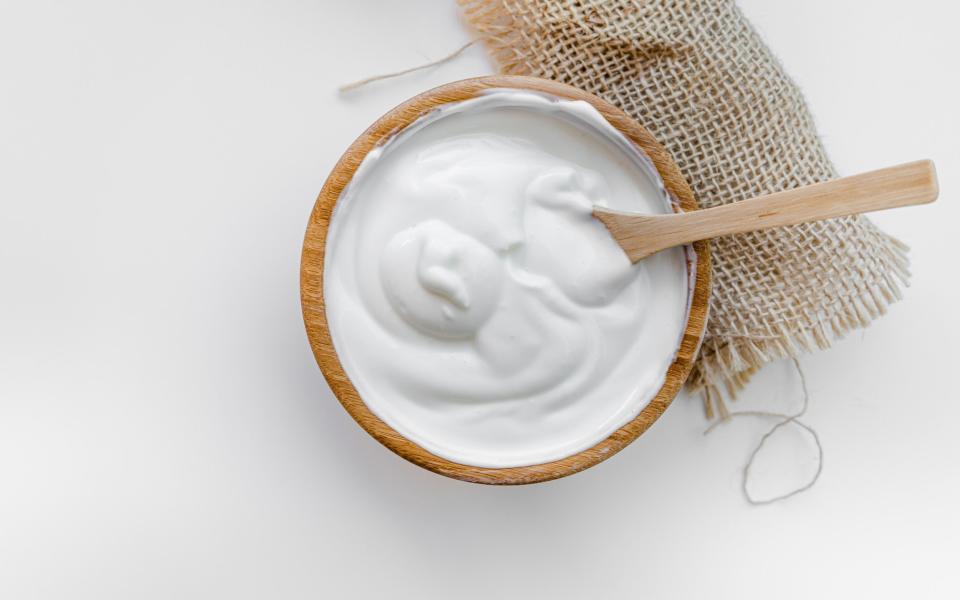The best diet to prevent Type 2 diabetes

While many of us know someone who has diabetes, there is a good chance we could also be at risk of developing the condition ourselves – or even have it already without knowing. According to Diabetes UK, 4.3 million people in the UK currently live with a diagnosis of diabetes, plus it is estimated almost a million more have the condition but are yet to be diagnosed. On top of this, another 2.4 million are in danger of developing it. This means more than one in 10 people in the UK either have diabetes or are at risk.
Diabetes is characterised by high blood glucose or sugar levels due to problems with insulin, which moves glucose from the blood and takes it to cells where it is used to provide energy. When this doesn’t work properly, levels of glucose rise in the blood causing symptoms such as tiredness, thirst, needing the lavatory more often, losing weight without trying, blurred vision, thrush and slower wound healing. If left untreated, serious health problems can develop.
“Diabetes is a serious condition and it’s important people receive the right care and support to prevent and manage it,” says Natasha Marsland, senior clinical adviser at Diabetes UK. “This is because high blood sugar levels over time can lead to serious complications.
“Every week, diabetes leads to 184 amputations, more than 770 strokes, 590 heart attacks and 2,300 cases of heart failure. That’s why it’s vital, if you do develop symptoms, to see your GP quickly so a diagnosis can be made, the condition can be monitored and, if necessary, treatment can begin to get blood sugar levels more stable.”
Can diabetes be prevented?
The two main types of diabetes are Type 1 and Type 2. “Just under 10 per cent of people living with diabetes have Type 1,” explains Marsland. “With this type, the body doesn’t produce any insulin at all, so people living with Type 1 diabetes have to take insulin for life to help manage their blood sugar levels. Checking and managing blood sugar levels is also important to prevent diabetes complications.”
Type 2 diabetes is far more common. “Around 90 per cent of people living with diabetes have Type 2, which causes high blood sugar levels due to the body not making enough insulin, or the insulin it makes not working properly. This is known as insulin resistance,” says Marsland.
Factors which increase the risk of Type 2 diabetes include ethnicity, family history and being overweight or obese. If you are Black African, African Caribbean or south Asian, you are at greater risk of becoming diabetic. Research has shown it is possible to put the condition into remission with weight loss, and many people have managed to achieve this with support from healthcare professionals.
But there’s also plenty we can do to lower our chances of developing it in the first place. “Research has consistently shown that for some people, making changes to their diet, being more active and losing any excess weight can be effective in reducing the risk of Type 2 diabetes by about 50 per cent,” confirms Marsland.
How can I lower my chances of developing Type 2 diabetes?
Heading up the list of changes we can make to lower our risk is losing weight, if necessary. “There’s a strong link between living with overweight or obesity and the development of Type 2 diabetes,” says Dr Paul McArdle, registered dietitian and former chairman of the British Dietetic Association’s Diabetes Specialist Group.
“Losing 5-7 per cent of body weight – that’s 5-7kg for someone who weighs 100kg – halves the risk of developing Type 2 diabetes,” says McArdle. Maintaining that weight loss has even greater benefits. “In the European Diabetes Prevention Study, maintaining a weight loss of 5 per cent for three years lowered the risk by 89 per cent.”
You don’t need to lose large amounts of weight to lessen your risk. Every kilogram lost is linked to a 16 per cent reduction in the risk of developing Type 2 diabetes.
“There are lots of different diets that support weight loss,” says McArdle.
“The key is to look out for plans that include plenty of wholegrains and fruit and veg, and are lower in red and processed meat, refined carbohydrates and sugar-sweetened drinks.”
How can a healthy diet reduce my risk?
Putting some sunshine into our diet and following a traditional Mediterranean diet - where meals are built around vegetables, fruits, nuts, beans and wholegrains, plus moderate dairy, poultry and seafood - is shown to be effective in protecting against Type 2 diabetes.
“Research typically shows Mediterranean diets lower the risk of developing Type 2 diabetes by around a fifth,” says McArdle.
For example, one review of studies involving almost 123,000 people found those who followed a Mediterranean diet reduced their risk of Type 2 diabetes by 19 per cent. Other research is even more impressive.
In the PREDIMED study, which initially set out to look at how diet changes could prevent cardiovascular disease, adults who followed a Mediterranean diet were 52 per cent less likely to develop Type 2 diabetes after about four years, when compared with those following a low-fat diet.

Of course no two people are the same, but many have found that the Mediterranean diet seems to work its magic by supporting better control of blood sugar levels, something health professionals refer to as glycaemic control.
“Exactly how the diet does this is still being researched but there are probably several potential mechanisms of action,” explains McArdle. “For example, Med diets seem to improve the action of a hormone called glucagon-like peptide 1 (GLP-1), which promotes insulin generation and secretion. Newer research also suggests a Mediterranean diet can positively influence gut health, setting up a chain of events that help to protect against the development of the condition.”
Meanwhile, the DASH diet – short for dietary approaches to stop hypertension and similar to the Mediterranean diet but with lean protein, limited salt and fat-free dairy products – has also been shown to cut the chances of getting Type 2 diabetes by 19 per cent. Vegetarian and vegan diets have been shown to reduce risk too.
“What all these diets have in common is their abundance of fruit, veg, wholegrains, pulses, nuts, seeds and olive oil with moderate amounts of fish, poultry, eggs and dairy products, and small amounts of red meat, processed and sugary foods,” says McArdle.
The statistics from one review of studies back this up: diets high in red and processed meat, refined grains, high-fat dairy and fried foods were found to increase diabetes risk by 44 per cent, while diets packed with vegetables, legumes, fruits, poultry and fish were associated with a 16 per cent reduction in risk. “Quite simply, the best way to lower the risk of getting Type 2 diabetes is to eat healthily and manage your weight,” says McArdle.
Here are eight tips for healthy eating if you’re at risk of developing Type 2 diabetes.
Skip sugary drinks
According to the Scientific Advisory Committee on Nutrition, higher intakes of sugar-containing drinks are linked to an increased risk and a higher body mass index (BMI). The best advice: stick to water or drinks sweetened with non-sugar sweeteners.
Cut down on sugary foods
Even though high sugar intakes aren’t a direct cause of Type 2 diabetes, they are linked to higher energy (calorie) intakes. Many sweet foods such as biscuits, desserts, cakes and chocolate also contain a lot of fat, adding to their high energy content. Over time, excess energy can cause weight gain, which in turn increases the risk of Type 2 diabetes. To satisfy a sweet tooth, go for fruit instead.
Get at least five a day
Eating more fruit and vegetables seems to protect against developing Type 2 diabetes. One review of studies found eating one extra serving of fruit and vegetables each day reduced the risk of developing Type 2 diabetes by 7 and 10 per cent, respectively. Apples, pears, blueberries and grapes, as well as green leafy veg such as broccoli, spinach, cabbage and kale, seem to be particularly effective, so add more of these to your diet.
Put pulses on the menu
According to a recent review of studies, eating pulses such as lentils, chickpeas and beans reduces the rise in blood glucose that happens after eating, even in people without diabetes. This is important as studies suggest a decrease in postprandial glycaemia – the technical term for increases in blood sugar after a meal – lowers the risk of developing diabetes. Plus, eating more pulses can help to improve satiety, which in turn helps us manage our weight.

Choose healthier carbs
Heaps of research suggests diets higher in wholegrains help protect us against Type 2 diabetes. For example, the combined results from three large studies found adults with the highest intakes were 29 per cent less likely to develop Type 2 diabetes than those with the lowest intakes. Wholegrain breakfast cereals and bread, brown rice, wheatgerm and oatmeal were particularly linked to a lower risk, so add these to your diet in place of refined carbs such as white bread and pasta. Higher intakes of white rice are also linked to a higher risk of Type 2 diabetes, while brown rice seems to have a small protective effect. There’s some evidence, too, that eating large amounts of potatoes may be linked to the condition, although the way we cook them, such as frying, may have more of an impact than the potatoes themselves.
Munch on almonds
Adding a couple of handfuls of almonds to diets may help lower the chances of getting Type 2 diabetes, according to a small study of pre-diabetic Asian Indians. The participants ate 20g of almonds 30 minutes before their breakfast, lunch and dinner each day. After three months, blood sugar levels had returned to normal in 23 per cent of those taking part and led to a reduction in weight and waist size. It is thought the combination of nutrients in almonds, which include fibre, protein and monounsaturated fats, may help improve glycaemic control and reduce hunger, enabling better weight management.
Have a pot of yogurt
Studies suggest that putting yogurt on the menu might help to protect against Type 2 diabetes, with one serving a day being linked to an 18 per cent reduction in the condition. There is also evidence that yogurt keeps us fuller for longer, probably because it’s rich in protein, and this helps manage our weight. To keep added sugars low, choose plain varieties and serve with fruit for sweetness.

Eat less red and processed meat
Many large studies suggest higher intakes of red and processed meat may make us more prone to developing Type 2 diabetes. One study of European adults found for each 50g increase in red meat and processed meat, the risk of the condition rose by 8 per cent and 12 per cent, respectively. Meanwhile, a new American study found those with the highest intakes of red meat were 38 per cent more likely to develop Type 2 diabetes compared with those who ate the least. Highest intakes of processed meat, such as ham, salami, bacon, sausages and other cured meats, saw a 60 per cent increase. Replacing a serving of meat with nuts or legumes, such as peanuts or peas, lowered the risk by 30 per cent.
Recommended
The hidden sugar in everyday foods – and how to separate the good from the bad

